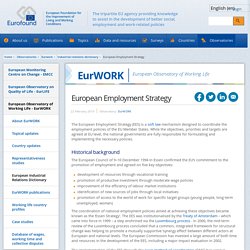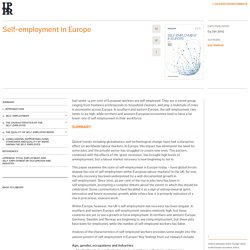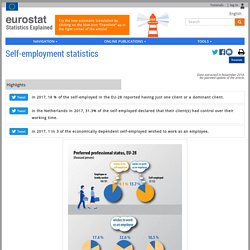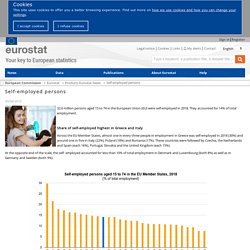

NEEM 1 - Unidad 9 ¿Qué meto en la maleta? - subtitulado. 為彭前總裁與央行的貨幣政策說些公道話. Csaba Moldicz – China-CEE Institute. CHENPIFEN 4 14. CHENPIFEN 4 14. Blue Green Simple Illustrated People Statistics Infographic Education Presentation. 109 II歐盟經濟議題小組名單. Youtube. The European Semester. European employment strategy - Employment, Social Affairs & Inclusion. The employment guidelines, proposed by the Commission and approved by the Council, present common priorities and targets for the national employment policies.

On 22 November 2017 the Commission adopted a proposal to amend the guidelines to align the text with the principles of the European Pillar of Social Rights. Specifically, the Employment Guidelines frame the scope and direction for Member States’ policy coordination and provide the basis for Country Specific Recommendations. European Employment Strategy. The European Employment Strategy (EES) is a soft law mechanism designed to coordinate the employment policies of the EU Member States.

While the objectives, priorities and targets are agreed at EU level, the national governments are fully responsible for formulating and implementing the necessary policies. Historical background. New forms of employment in Europe—how new is new? – Irene Mandl. Self-employment in Europe. The self-employment rate of older workers is higher than for other age-groups.

Older workers tend to have more experience and higher levels of human capital, as well as larger capital reserves and better access to credit with which to start a business. In all, only 3 per cent of European self-employed workers are aged 15–24, compared with 42 per cent who are over the age of 50, and 56 per cent aged 25–49. Source: Eurostat Labour Market Database (Eurostat 2014a) 3.1 Older workers. Statistics. Self-employment statistics - Statistics Explained. Almost two thirds of the self-employed had more than 9 clients The 2017 Labour Force Survey (LFS) ad-hoc module targets the self-employed and the persons at the boundary between employment and self-employment.

It aims moreover to measure the degree of economic and organisational dependency of the self-employed, defined on the basis of the number of clients and the percentage of income coming from a client as well as in terms of control over working hours. Self-employed persons - Products Eurostat News - Eurostat. 32.6 million persons aged 15 to 74 in the European Union (EU) were self-employed in 2018.

They accounted for 14% of total employment. Share of self-employed highest in Greece and Italy Across the EU Member States, almost one in every three people in employment in Greece was self-employed in 2018 (30%) and around one in five in Italy (22%), Poland (18%) and Romania (17%). Self employment in Europe 2019. Chenbf. 歐盟經濟議題. Amsterdam Funding q121. Entrepreneurship and Small and medium-sized enterprises (SMEs) See the ‘Unleashing the full potential of European SMEs’ factsheet.

See the SME definition. What the European Commission does for SMEs SME Strategy At the centre of the Commission's action is the new SME Strategy for a sustainable and digital Europe.